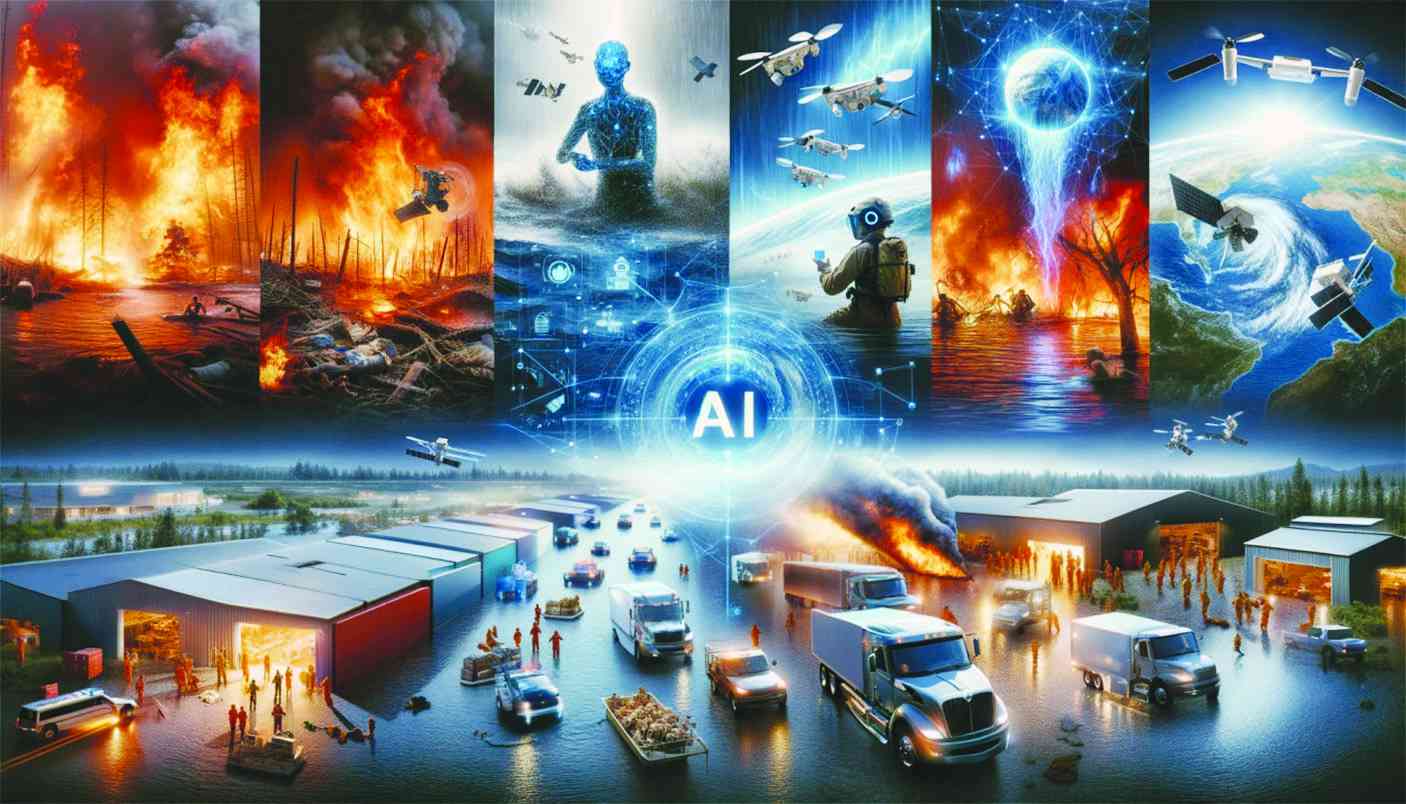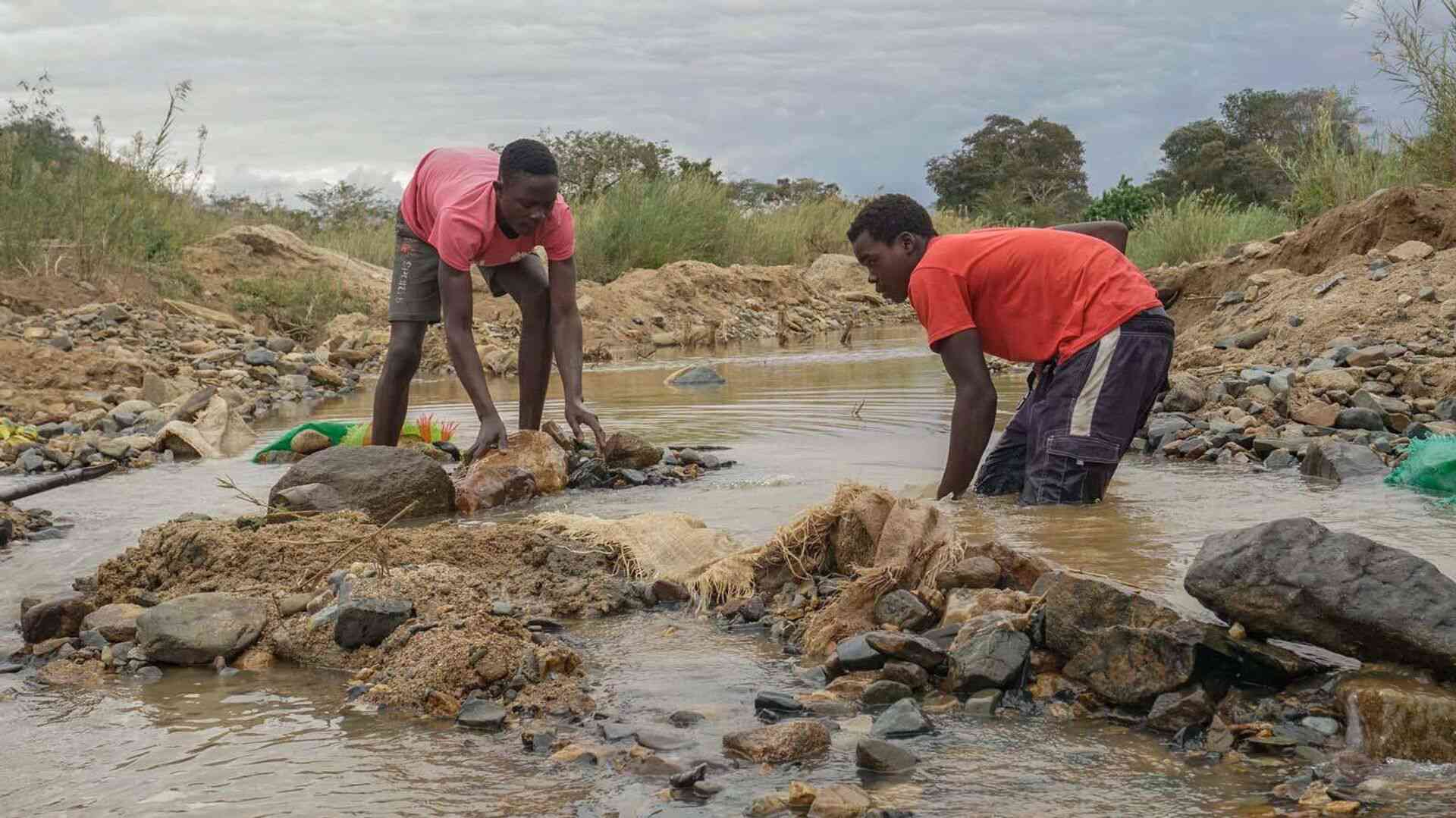
DISASTER management is defined as a crucial set of strategies and actions aimed at handling extreme events. It holds the key to mitigating negative impacts by focusing on prevention, response and recovery efforts.
Artificial intelligence (AI) is increasingly recognised as a transformative tool in disaster management, particularly in enhancing preparedness and response efforts in Zimbabwe.
The integration of AI technologies can significantly improve the country's ability to manage natural disasters such as floods, droughts, and cyclones, which are common in the region.
AI applications in disaster mgmt
Predictive analytics: AI algorithms can analyse historical data and weather patterns to predict the likelihood of disasters. This allows authorities to implement proactive measures, such as evacuations and resource allocation, to mitigate potential impacts.
Real-time monitoring: AI-powered sensors and drones provide real-time data on disaster-affected areas, enabling responders to identify critical needs and allocate resources efficiently. This technology was notably used after Cyclone Idai in 2019 to assess infrastructure damage and optimise relief efforts.
Resource optimisation: AI can optimise the distribution of resources, ensuring that aid reaches the most affected areas promptly. This capability is crucial in managing scarce resources during emergencies.
Damage assessment: AI-driven satellite imagery helps assess damage to infrastructure and crops, allowing for prioritised response efforts. This technology aids in quick recovery by providing accurate data for decision-making.
- Harvest hay to prevent veldfires: Ema
- Public relations: How artificial intelligence is changing the face of PR
- Queen Lozikeyi singer preaches peace
- Public relations: How artificial intelligence is changing the face of PR
Keep Reading
Communication and coordination: AI-powered chatbots and platforms enhance communication between responders, authorities and affected communities, ensuring timely dissemination of critical information.
Challenges and opportunities
While AI offers immense potential, Zimbabwe faces challenges such as limited internet connectivity and technological infrastructure, especially in rural areas. Addressing these barriers requires investment in infrastructure and efforts to bridge the digital divide.
Prospects
The continued development and integration of AI in disaster management can revolutionise Zimbabwe’s preparedness and response strategies.
By using AI’s capabilities, Zimbabwe can build more resilient communities, ultimately saving lives and minimising the impact of natural disasters.
In its online page, the About Resilience newsletter says: “In tandem with the rapid pace of technological advancement, we find ourselves navigating an era profoundly impacted by the often-catastrophic consequences of climate change.
“Unprecedented extreme weather events, ranging from heatwaves and floods to droughts and intense storms, serve as visible evidence of the far-reaching effects stemming from the long-term disruption of average temperature, precipitation, wind patterns, and other climatic parameters. These events are becoming increasingly frequent and severe across the globe.
“Ironically, the challenge we face when addressing such events lies not in the scarcity of data but in our ability to swiftly process and interrelate these vast datasets, while developing predictive models and short and very short-term action plans.
“In this context, AI emerges as a powerful tool with the potential to revolutionise the speed and way we gather and analyse data. By transforming our data processing methodologies, it enables us to derive the ‘intelligence’ required for rapid and informed decision-making.”
In a feature titled AI in Disaster Management: A Game-Changer for the Poor, Tsikira Lancelot explained: “Natural disasters and crises like Covid-19, cyclones and road accidents often disproportionately impact poor and vulnerable populations. These events can lead to devastating consequences, leaving a trail of destruction, displacement and loss of life.
“With the advent of artificial intelligence (AI), disaster response efforts can be enhanced, saving lives and reducing the suffering of affected communities. Below mentioned are some of the disasters and how AI can be used as a game changer:
Floods: AI-driven sensors can monitor water levels and predict flood risk, helping authorities evacuate people and deploy resources.
Earthquakes: AI-powered systems can analyse seismic data to predict earthquake likelihood and magnitude, enabling early warning systems and evacuation plans.
Landslides: AI-powered sensors can monitor soil moisture and detect landslide risk, enabling evacuation and mitigation measures.
Wildfires: AI-powered drones can detect wildfires early, while AI algorithms predict fire spread and optimise firefighting efforts.
Tsunamis: AI-powered systems can analyse ocean sensor data to predict tsunami risk and alert authorities.
Volcanic eruptions: AI-powered sensors can monitor volcanic activity and predict eruption likelihood, enabling evacuation and ash-fall mitigation.
Heatwaves: AI-powered systems can predict heatwave risk and alert authorities to deploy heatwave mitigation measures.
Droughts: AI-powered sensors can monitor soil moisture and predict drought risk, enabling water conservation efforts.
Chemical spills: AI-powered sensors can detect chemical spills and predict their spread, enabling rapid response and mitigation.
Nuclear accidents: AI-powered sensors can detect radiation levels and predict accident severity, enabling rapid response and evacuation.
AI in disaster response
“AI can revolutionise disaster response by offering critical insights, enhancing decision-making, and optimising resource allocation. Here are some ways AI can help:
Predictive analytics: AI algorithms can analyse historical data, weather patterns, and other factors to predict the likelihood of a disaster occurring. This enables authorities to take proactive measures, evacuating people and allocating resources accordingly.
Real-time monitoring: AI-powered sensors and drones can provide real-time monitoring of disaster-affected areas, helping responders to identify areas of need and allocate resources effectively.
Resource optimisation: AI can optimise resource allocation, ensuring that the right resources are deployed to the right areas at the right time.
Damage assessment: AI-powered satellite imagery can assess damage to infrastructure, homes and crops, helping authorities to prioritise response efforts.
Communication: AI-powered chatbots can facilitate communication between responders, affected communities and authorities, ensuring that critical information is shared efficiently.
Covid-19
“During the Covid-19 pandemic, AI played a crucial role in:
Predictive modelling: AI algorithms predicted the spread of the virus, enabling authorities to take proactive measures.
Contact tracing: AI-powered contact tracing apps helped identify potential cases, reducing the spread of the virus.
Vaccine distribution: AI optimised vaccine distribution, ensuring that vaccines reached high-risk areas first.
Cyclone Idai in Zimbabwe
“After Cyclone Idai struck Zimbabwe in 2019, AI was used to:
Assess damage: AI-powered satellite imagery assessed damage to infrastructure and homes.
Optimise relief efforts: AI helped allocate resources, ensuring that aid reached affected areas efficiently.
Road carnage
“AI can help reduce road carnage by:
Predictive analytics: AI algorithms can predict high-risk areas and times, enabling authorities to deploy resources accordingly.
Real-time monitoring: AI-powered sensors can monitor road conditions, detecting potential hazards and alerting authorities. By leveraging AI, authorities can enhance road safety and reduce the number of accidents on the countries’ roads.
“AI has the potential to revolutionise disaster response, saving lives and reducing the suffering of affected communities. Authorities can enhance predictive analytics, real-time monitoring, resource optimisation, damage assessment and communication.
“As we move forward, it is essential to invest in AI research and development for disaster response, ensuring better preparedness to face future crises. AI’s applications in disaster response are vast, and its integration can lead to more efficient and effective disaster management, saving lives and reducing damage.”
In conclusion, the integration of AI in disaster management represents a significant advancement in enhancing preparedness, response, and recovery efforts. By leveraging AI technologies such as predictive analytics, real-time monitoring and resource optimisation, we can revolutionise how we approach natural disasters and other extreme events.
The use of advanced AI systems in the preparatory phase enables proactive decision-making and efficient allocation of resources, ultimately leading to improved disaster resilience.
As we continue to harness the power of AI in disaster management, we are not only safeguarding lives and infrastructure, but also paving the way for a more effective and efficient approach to addressing unforeseen challenges in the future.
Bangure is a filmmaker. He has extensive experience in both print and electronic media production and management. He is a past chairperson of the National Employment Council of the Printing, Packaging and Newspaper Industry. He has considerable exposure to IT networks and Cloud technologies. — naison.bangure@hub-edutech.com










